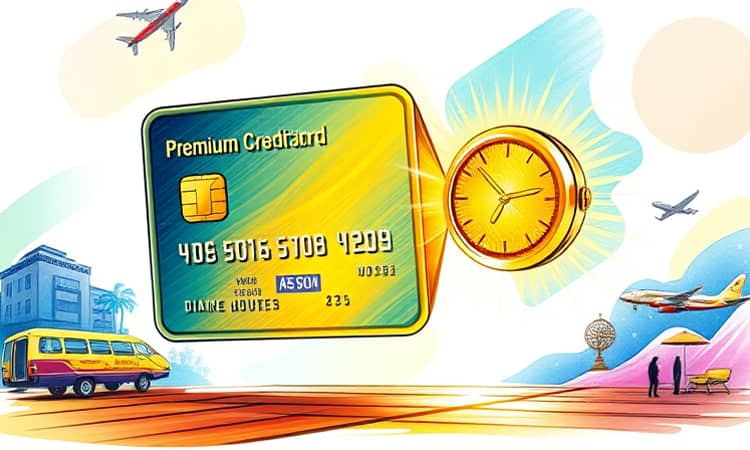Premium credit cards remain symbols of status and gateways to elevated financial experiences. In 2025, they continue to evolve, offering more than just points and miles. Savvy consumers can tap into a host of benefits that many overlook.
Understanding these hidden advantages can turn an annual fee into one of the best investments you make every year.
Recent Changes in the Premium Credit Card Landscape
Over the past year, issuers have been regularly adjusting offerings to remain profitable amid shifting economic pressures. While some cards have expanded their travel protections, others have trimmed benefits or raised fees.
Annual fees now commonly range between $550 and $695, with flagship cards like the Delta Reserve Card at $650 and the United Club Card at $695. As costs rise, cardholders must weigh these hefty annual fees often exceeding most people’s expectations against the real value they receive.
At the same time, the market has grown more competitive. New entrants emphasize flexible points and lifestyle perks over traditional airline- or hotel-branded rewards, reshaping consumer expectations.
Uncovering the Hidden Perks
Beyond the obvious points and miles, premium cards carry a suite of benefits that can dramatically enhance your travel and lifestyle. Many cardholders fail to activate or even discover these advantages.
- Exclusive lounge access worldwide: From airport sanctuaries to private club events, lounges offer comfort, food, and quiet spaces before flights.
- Travel and purchase protections: Trip cancellation and interruption insurance, car rental collision coverage, lost luggage reimbursement, and purchase protection guard against unexpected losses.
- Statement credits for travel: Many cards reimburse for Global Entry or TSA PreCheck, ride-share services, hotel stays, and dining, effectively defraying the card’s fee.
- Concierge services and priority support ensure you never miss a reservation or an exclusive ticket.
- Automatic elite status with hotel and airline partners elevates stays and in-flight amenities.
Maximizing Welcome Offers
Welcome offers on premium cards are more generous than ever, with sign-up bonuses valued between $875 and $1,250 after meeting minimum spending requirements. Cards like the Hilton Honors Aspire Card can deliver up to $1,000 in combined credits, while airline-branded options such as the Delta Reserve offer high-mileage bonuses.
To extract full value, plan your introductory spending around everyday expenses—utilities, groceries, and business costs. By front-loading these charges, you can reach the thresholds quickly, unlocking points that cover flights, hotel stays, or statement credits.
How to Offset Your Annual Fee
Offsetting a premium card’s fee requires a strategic approach. By leveraging credits and perks, the net cost can become negligible or even positive.
By combining these credits with lounge visits and protective insurances, many cardholders find they more than recoup their fees. Tracking credits and scheduling redemptions before they expire is key to success.
Who Should Consider a Premium Card?
Not every consumer benefits from a high-fee card. Ideal candidates share certain traits and spending habits:
- Frequent travelers who visit airports and upscale hotels regularly.
- High spenders who can unlock and use large welcome bonuses quickly.
- Individuals seeking top-tier rewards, convenience, and VIP treatment.
- Anyone willing to monitor benefits and schedule credit redemptions carefully.
Common Pitfalls and Considerations
While the perks are alluring, there are downsides to keep in mind. Interest rates on revolving balances remain high, averaging 22.8% in 2025. Carrying a balance negates most rewards, making these cards unsuitable for revolving debt.
Perks may require activation, and some credits expire annually. Failing to enroll or track deadlines can leave hundreds of dollars unused. Owners of cards with annual fees over $100 were twice as likely to use their card’s special offers compared to no-fee counterparts—but only if they pay attention.
Issuers may quietly downgrade benefits, so staying abreast of updates is crucial. Financial savvy is increasingly important in this evolving segment.
Selecting the Right Card for You
With dozens of premium cards vying for your attention, establishing selection criteria helps streamline the decision:
- Analyze your annual travel spend and compare it to included credits.
- Match card partners to your preferred airlines and hotel chains.
- Factor in additional lifestyle perks like dining credits or entertainment access.
- Read the fine print on activation requirements and expiration policies.
By following these checks, you’ll align the card’s strengths with your habits and preferences, ensuring maximum return on investment.
Conclusion
Premium credit cards are far more than payment tools; they are keys to elevated experiences in travel, hospitality, and lifestyle. By understanding and activating elevated perks and rewards, leveraging robust welcome offers, and proactively offsetting fees, you convert a substantial annual charge into substantial value.
In 2025’s competitive landscape, your ability to navigate and capitalize on these hidden advantages defines the difference between a simple plastic card and a powerful travel companion. Stay informed, stay proactive, and let your premium card unlock a world of possibilities.














